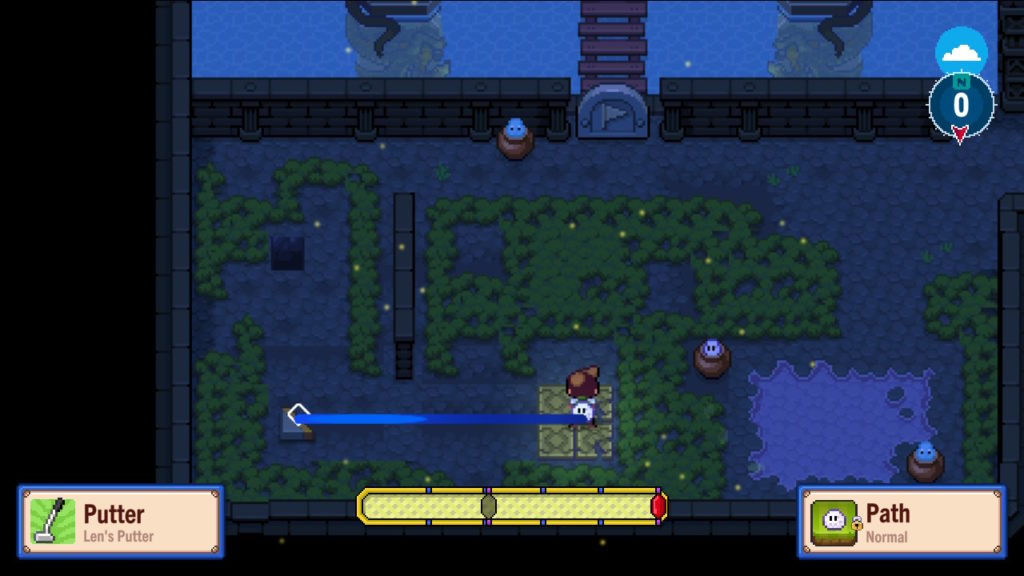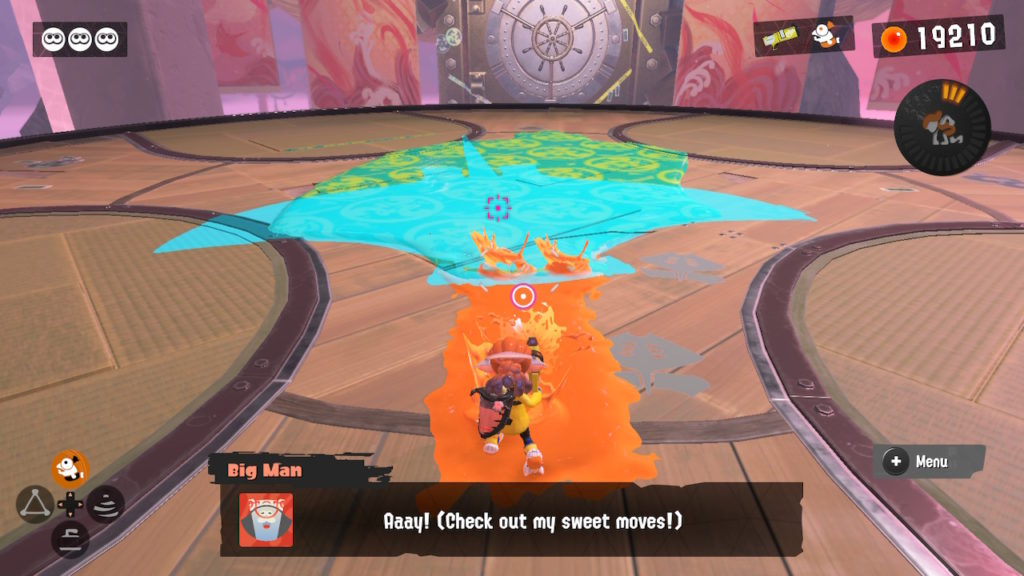- Genre: RPG
- Platform: Switch
I really enjoyed Golf Story quite a lot, so I figured this was going to be an automatic home run. However, it just never hit for me. It’s not that the core game is really that different from the original, but some minor changes cascade into a lot of unnecessary-feeling drudgery. This then gets combined with day-1 performance, stability, and bug issues to turn into an experience that really just made me tune out. To say it was a disappointment would be a massive understatement.
I could probably forgive a lot of things about this game if it ultimately didn’t just baffle me with a lot of what was going on when I did end up in the golf portion of the game. The previous one had some pretty wild gimmicky courses, but they were fun because of the gimmicks. In what I’ve seen of Sports Story, the gimmicks are way reduced, so the golf is just kind of normal. However, it’s wildly inconsistent. Take these two videos from a desert course:
This first one shows what is effectively a shot from the rough in this course going completely wild. Does it have something to do with the terrain I shot from? Maybe, but it’s not entirely clear why that would be the result of a pretty good shot. Even if that is intended, why is that a good idea? It’s incredible player friction to randomly penalize them for doing things correctly.
This second video shows me hitting a mine on my shot. Again, am I hitting it purely because I’m doing a relatively low driver shot? Probably. Does that make sense at all from a gameplay perspective to penalize a player that much? Not really. I was taking an allegedly safe fairway shot and just got hosed from it.
That sort of decision making is present everywhere in this game. Where the original had some amount of RPGish mechanics to lead you through some fun interactions, this one leans way too heavily on fetch quests. Worse, the fetch quests are generally vague and offer no actual direction, so you’ll find yourself wandering around trying to find the right target instead of simply playing the game. It’s simply increased player friction that does nothing to serve improving the player experience.

So then this gets into another point of frustration for me. The couple of times that the game leans into doing dungeon-style experiences, it’s a lot of fun. There’s the one from the pic above where you go through a Zelda-style top-down dungeon playing minigolf to complete puzzles. This is complete with your usual assortment of keys to find and a boss fight at the end. Another one of them is an NES Metal Gear style dungeon built heavily around stealth mechanics. Both of these are really well-crafted homages to past games, so seeing the rest of the game around it falter is hugely disappointing.
That’s to say nothing of the other sports involved here. Tennis is the biggest star, with its own entire academy side story. Unfortunately, as seen above, the actual tennis experience is wildly inconsistent with reality. The core rules of tennis aren’t respected. Who gets points is sometimes hard to guess. I also managed to break the quest line in the academy, so I was never actually able to finish it.
In terms of other sports, cricket and baseball are lightly represented but aren’t more than single button mash to hit with timing being loosely important. I played volleyball once and never came back to it. I played soccer penalty kicks a couple times, but it was pretty much ball will always curve left so aim correct to win. There is a neat Excitebike-style minigame that comes up once in each world, and that’s probably the best of the bunch. However, none of them ever truly live up to the promise of this being a bunch of well integrated sports. They feel like they’re there for the sake of being there, rather than for improving the game.
I’m cognizant of the fact that it probably sounds like I’m being incredibly harsh on this game and there’s certainly a lot of truth to that. However, I want to make sure that I’m getting across how disappointed I am. This is easily my letdown of the year. It’s not even that new things didn’t pan out, but the core of what made the previous title so good also feels like it’s taken obvious steps backwards. The RPG progression is not as fun, the golf game is inconsistent, the game is not stable and has framerate issues that come up during shooting. It just feels like a game that missed the mark and I’m sad for that fact because I’ve so been looking forward to playing this one all year.



